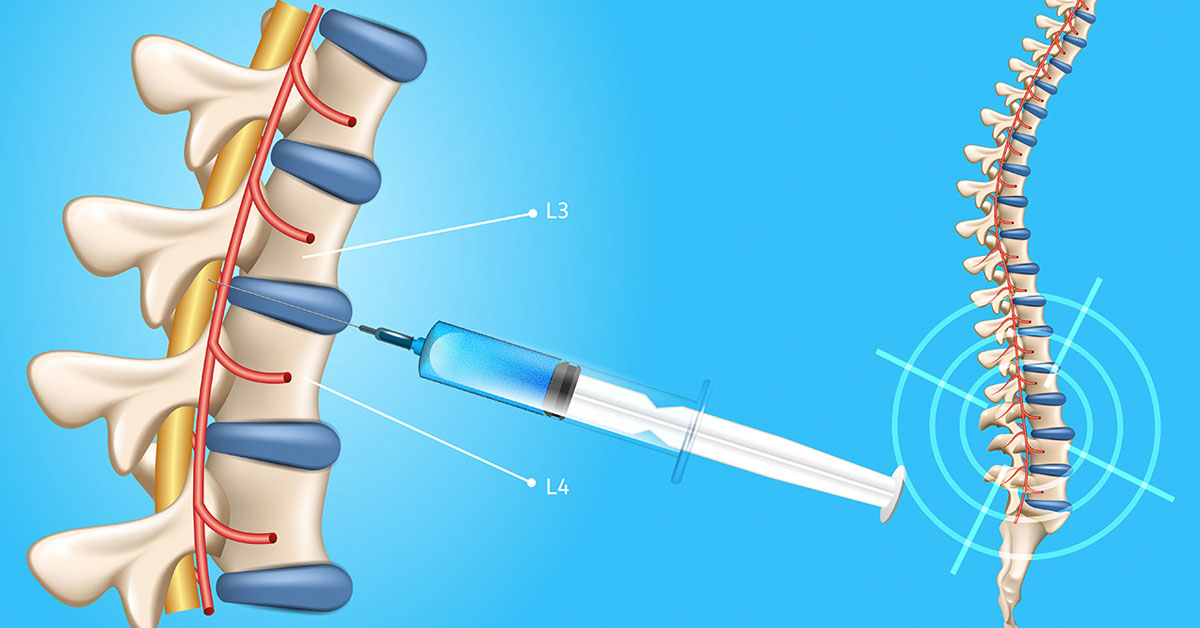
What is a Lumbar Puncture?
A lumbar puncture is commonly called a spinal tap. This procedure allows a physician to examine the cerebrospinal fluid. Cerebrospinal fluid (CSF) is the fluid that surrounds the brain and spinal cord, and protects them from injury. CSF is most often collected from the lower back (the lumbar region); thus the name lumbar puncture or spinal tap. Here a needle is inserted between two bones of the spine (vertebrae) and a sample of CSF is removed.
A lumbar puncture can help diagnose serious infections, disorders of the central nervous system, or cancer of the brain or spinal cord. Sometimes doctors use lumbar puncture to inject medications or chemotherapy drugs into the cerebrospinal fluid.
Why is a Lumbar Puncture Performed?
The procedure can help a physician:
- Measure the pressure of the cerebral spinal fluid (i.e., the pressure around the brain and spinal cord)
- Relieve pressure in the skull
- Inject spinal anesthesia, chemotherapy drugs or other medications
- Inject a dye or radioactive substance into cerebrospinal fluid in order to make diagnostic images of the CSF's flow
A lumbar puncture can also be used to help diagnose:
- Nervous system disorders (e.g., multiple sclerosis) that affect the brain, spinal cord, or their coverings (meninges)
- Bleeding around the brain (subarachnoid hemorrhage)
- Cancer of the spinal cord or brain
- Certain infections (e.g., encephalitis, meningitis, or syphilis)
- Other conditions that affect the central nervous system
How is a Lumbar Puncture Performed?
- A lumbar puncture is usually performed as an outpatient procedure. It usually lasts about an hour. Generally, patients will be required to rest on their stomach or back for a while following the procedure.
- The patient will lie on their side with knees pulled as close to the chest as possible and the chin tucked in. Occasionally, the test is done with the patient sitting and leaning forward onto a stable surface. Both of these positions flex the spine in a way that widens the spaces between the bones (vertebrae) and make it easier to insert a needle.
- The back is cleansed with an antiseptic and covered with a sterile sheet. A local anesthetic is injected into the lower back to numb the puncture site. The anesthetic may cause a brief stinging or burning sensation.
- When the low back is numb, a thin, hollow needle is inserted between two bones, or vertebrae, and eventually into the spinal canal. The needle does not touch spinal cord itself. Penetration of the spinal canal can cause discomfort in the form of pressure or a minor headache. X-rays may be used to help guide the needle into the correct location.
- After the needle is in place, the cerebral spinal fluid pressure can be measured, and a small sample withdrawn. Alternatively, if the lumbar puncture is part of another procedure, medication or a dye can be injected at this point.
- The needle is removed, the area is cleansed, and the puncture site is covered with a bandage.
What Can the Results of a Lumbar Puncture Reveal?
CSF Pressure: Decreased pressure may be the result of diabetic coma, shock, fainting or spinal canal blockage. Increased pressure may be the result of increased pressure within the skull.
CSF Appearance: CSF should be colorless and clear. A cloudy appearance can indicate the presence an infection, or an excess of protein or white blood cells in the CSF. A red appearance can indicate bleeding or a spinal cord obstruction. An orange or brown appearance may be a sign of prior bleeding.
Blood Cells in the CSF: Spinal fluid normally contains some white blood cells. However, increased numbers may indicate things like infection or the beginning of a chronic illness (e.g., multiple sclerosis). The presence of red blood cells may indicate bleeding into the spinal fluid (e.g., as result of a traumatic injury).
Presence of Foreign or Abnormal Cells: The presence of microorganisms can indicate an infection. And, the presence tumor cells or immature blood cells may indicate cancer.
Elevated levels of protein: Increased protein levels may be due to an infection, inflammation, tumor, diabetes, injury, or polyneuritis. Increased levels of specific immune system proteins may be due to diseases (e.g., multiple sclerosis, Guillain-Barre syndrome or syphilis). Decreased protein levels are a sign of rapid CSF production.
CSF Glucose Levels: Elevated glucose is a sign of high blood sugar. Low glucose levels may be due to low blood sugar or infection.




